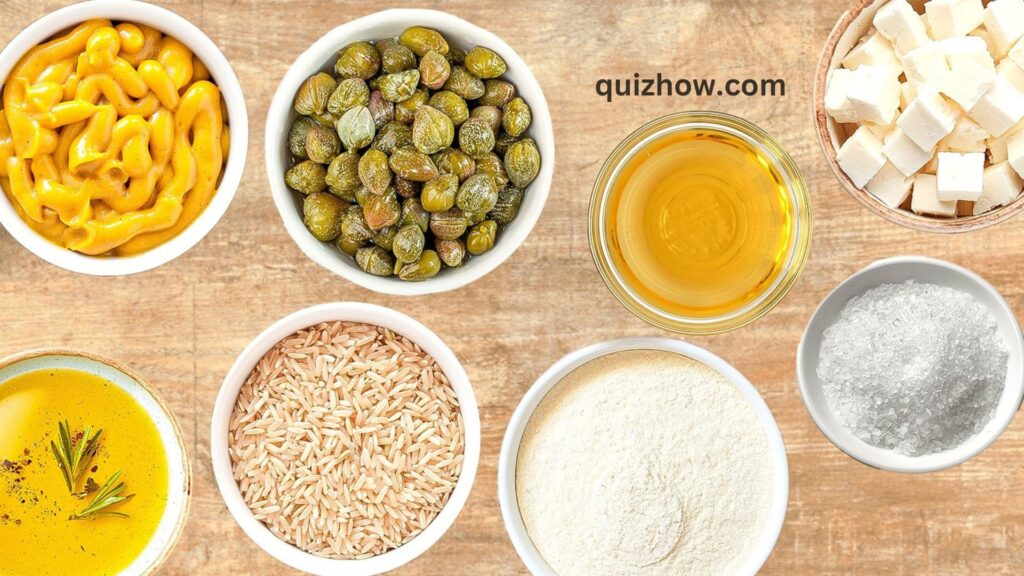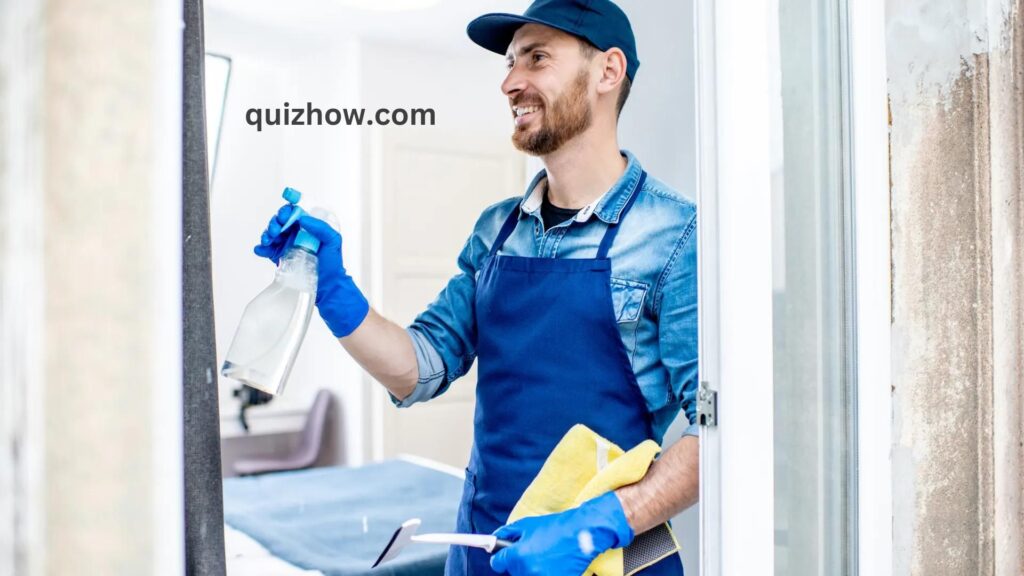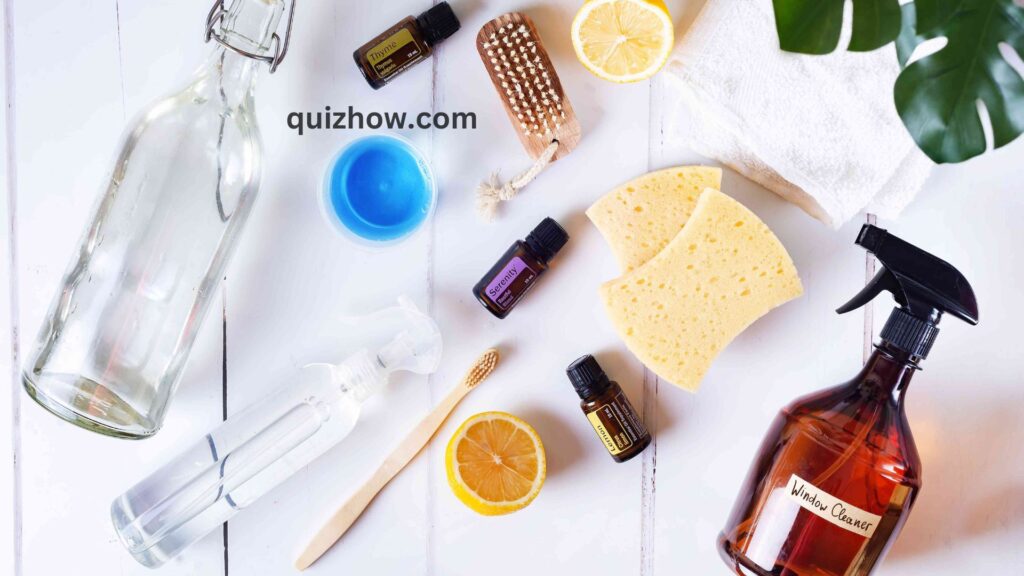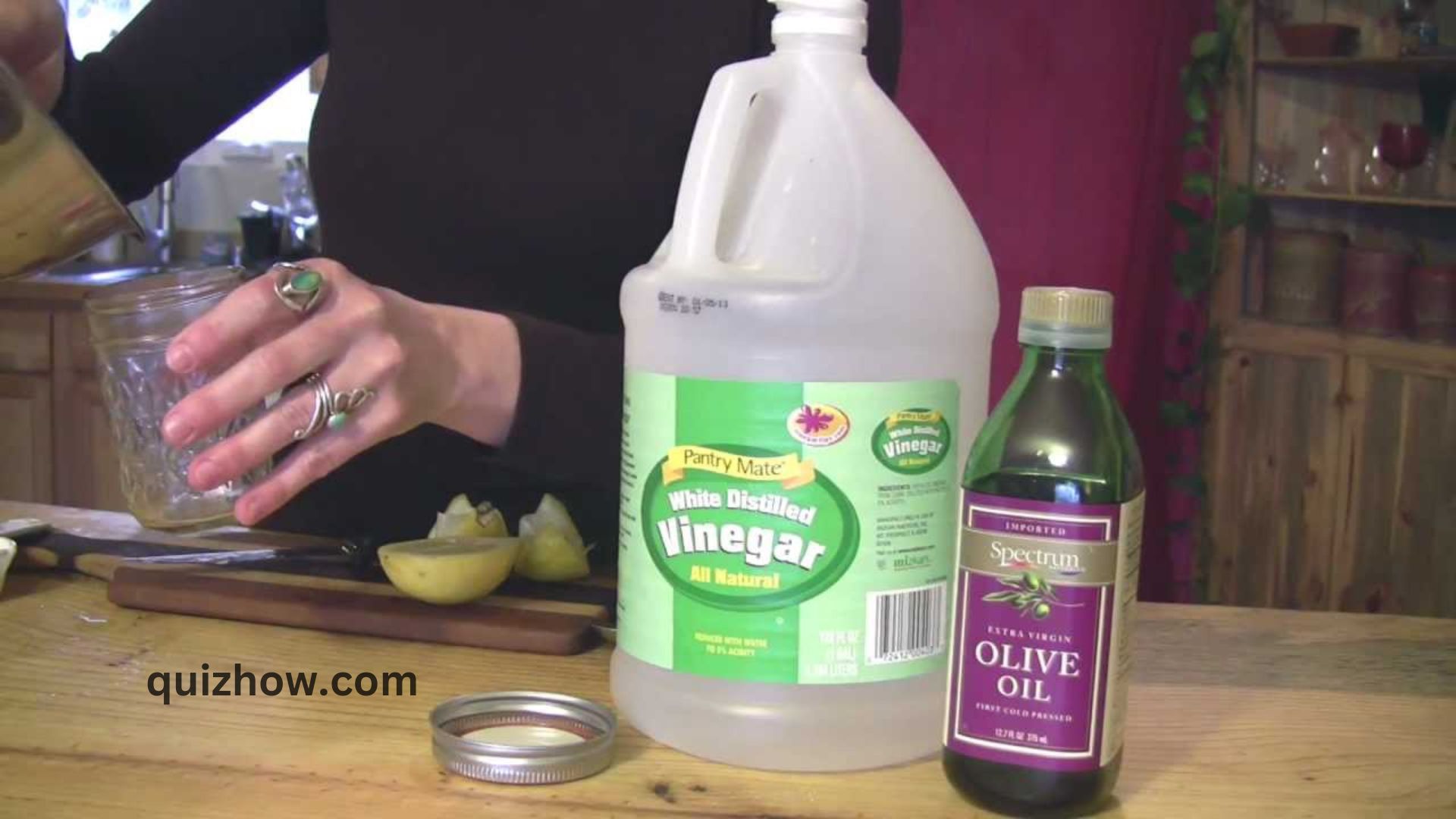Great news: You don’t have to rely on store-bought cleaners to keep your home sparkling!
If you’re looking to avoid harmful chemicals, save money, or be more eco-friendly (or all three!), making your own homemade cleaners is a breeze. Plus, you can whip them up with stuff you probably already have at home, often in less time than it would take to run to the store.
Why do it?

There are plenty of reasons to switch to homemade cleaners, from helping the planet to saving money and getting effective results.
They’re Better for Your Health and the Environment
DIY cleaners are generally better for both you and the planet. Many store-bought cleaners come in plastic bottles and contain toxic chemicals that can be harmful. The EPA says indoor air pollution from these products is a major environmental concern and can cause problems like irritated eyes, headaches, dizziness, and even respiratory diseases and cancer.
Most commercial cleaning products aren’t closely regulated, and even those labeled “green” can still contain harmful chemicals. Studies have shown that some professional cleaners can include irritating and harmful substances like fragrances, glycol ethers, and solvents.
They Save You Money
Store-bought cleaners often come diluted, so you end up using more of them. Plus, buying basics like vinegar and baking soda in bulk is cheaper and you probably already have some of these in your pantry. Buying different cleaners for every task—like tile cleaner, window cleaner, and toilet cleaner—can get pricey. Making your own can cut costs and reduce plastic waste.
They’re Just as Effective
Homemade cleaners can be just as powerful as commercial ones. For example, a study found that vinegar mixed with citric acid can kill bacteria, viruses, and fungi. Hydrogen peroxide and baking soda have been used for over a century as disinfectants and bleach.
Other research shows that simple ingredients like soap, water, baking soda, and vinegar can handle most household cleaning jobs. These ingredients are often safer and just as effective as their store-bought counterparts.
So, giving homemade cleaners a try can be a win for both your health and your wallet!
Supplies and Ingredients You’ll Need

Essentials
If you’re diving into DIY cleaning, here’s a list of common ingredients you’ll want to have on hand:
- Baking Soda
This is great for tackling grease, proteins, and pet messes. It’s a fantastic deodorizer and often cheaper than store-bought scrubbing powders. You can even use it in litter boxes and trash cans. - Distilled White Vinegar
Vinegar is a go-to for homemade cleaning. Its acidity works wonders on alkaline stains. It’s even more effective in higher concentrations. Apple cider vinegar also contains acetic acid, which is similar. - Hydrogen Peroxide
A greener alternative to bleach, hydrogen peroxide breaks down into harmless oxygen and water. It’s just water with an extra oxygen molecule (H₂O₂), making it a safe choice for cleaning. - Lemon Juice
Besides smelling amazing, lemon juice cuts through grease, kills mildew and mold, and adds a nice shine to surfaces. - Cleaning Cloths
Microfiber cloths, old cotton t-shirts, or other reusable rags are perfect for wiping and cleaning while reducing waste.
Nice to Have
While not absolutely necessary, these extras can boost your DIY cleaning game:
- Borax
Borax helps cut grease, oil, and dirt, but use it cautiously as it can irritate the skin and eyes and affect hormones. - Essential Oils
Essential oils aren’t essential, but they can make your cleaners smell great. Tea tree oil is a natural antibacterial, and other favorites include eucalyptus, citrus, lemongrass, and lavender. - Castile Soap
Versatile Castile soap can be used for laundry, floors, dishes, and even as shampoo. It’s made from olive oil or vegetable base and comes in both bar and liquid forms. For cleaning, the liquid version is ideal. - Glass Bottles
Recycle your old cleaning bottles or invest in glass ones to store your homemade cleaners. This way, you can reuse them and reduce waste.
Essential cleaning safety tips
Even though indoor air pollutants can have negative effects, cleaning product safety isn’t always closely regulated. The EPA only oversees cleaners that contain registered pesticides.

That said, just because a cleaner is labeled “natural” doesn’t mean it’s automatically safe. Whether you’re using store-bought or homemade cleaners, always use them with care.
Also, keep in mind that some cleaners can damage your home or belongings. For example, vinegar is generally safe but should be avoided on:
- Stone surfaces like granite or marble
- Cast iron
- Aluminum
- Waxed surfaces
The acidity in vinegar can strip finishes or cause damage to these materials.
And a quick tip: mixing vinegar or lemon juice with Castile soap isn’t a good idea. Castile soap is alkaline, and when mixed with the acidic vinegar or lemon, it neutralizes both, making them less effective.
DIY household cleaner recipes

Looking to make your own cleaners at home? I’ve got some simple recipes to get you started. And if you’re in a pinch, I’ve included a few product suggestions too.
1. All-Purpose Cleaner
These cleaners are super versatile and can be used on almost any surface to clean and deodorize. Just remember, this citrus-infused vinegar cleaner isn’t suitable for natural stone, cast iron, aluminum, or waxed surfaces. Shake it up before use, spray it on, and wipe it clean with a cloth.
Ingredients:
- White distilled vinegar
- 1 cup water
- 1 tsp unscented liquid castile soap
- Citrus peels
- Quart-sized mason jar
- Glass or plastic spray bottle
Directions:
- Fill a quart-sized mason jar with leftover citrus peels (like orange, lemon, or grapefruit).
- Pour white vinegar into the jar until it’s full and screw on the lid.
- Let it infuse for at least two weeks in a sunny spot.
- Strain out the peels and toss them.
- Mix ½ cup of the citrus-infused vinegar with 1 cup of water and 1 tsp of castile soap in a spray bottle. Shake well.
Need a store-bought option? Try Method All-Purpose Natural Surface Cleaner.
2. Vinegar-Free All-Purpose Cleaner
If you don’t want to use vinegar—maybe because you’re cleaning granite, marble, or just don’t like the smell—this is a great alternative.
Ingredients:
- 2 cups water
- 1 tbsp liquid castile soap
- Glass or plastic spray bottle
Directions:
- Fill your spray bottle with water.
- Add castile soap.
- Shake well.
Prefer to buy it? Try Attitude Multipurpose Spray Cleaner.
3. Machine-Safe Laundry Detergent
This recipe avoids Borax and works great for washing machines.
Ingredients:
- 1 cup baking soda
- 1 cup washing soda
- 1 cup salt
- 1½ cups unscented liquid castile soap
- 30-40 drops essential oil
- Clean jug or large jar
Directions:
- Mix the dry ingredients together.
- Add liquid castile soap.
- Add essential oils if you like.
Looking for something pre-made? Try Dr. Bronner’s Pure-Castile Liquid Soap or Arm & Hammer Super Washing Soda Detergent Booster.
4. Laundry Detergent for Delicates
For hand-washing delicate items, use a mild castile soap like Dr. Bronner’s.
5. Kitchen Cleaner
This is perfect for sanitizing surfaces, but make it fresh. Its effectiveness drops quickly.
Ingredients:
- 1 cup vinegar
- 1 cup club soda
- 2 drops tea tree essential oil
- Glass or plastic spray bottle
Directions:
- Mix all ingredients in a spray bottle.
- Shake well.
- Spray and wipe clean.
6. Dish Detergent
You can use this for hand-washing or in the dishwasher.
For hand-washing:
- Mix 1 cup of liquid castile soap with 3 tbsp water. Shake well and use as usual.
For dishwasher:
Ingredients:
- 1 cup liquid castile soap
- 1 cup water
- 2 tsp lemon juice (optional)
Directions:
- Combine ingredients.
- Add to the detergent compartment of your dishwasher.
- Fill the other compartment with white vinegar.
Need to buy it? Try Ecover Rinse Aid or Seventh Generation Natural Automatic Dishwasher Powder.
7. Grease Cleaner
No need for pricey chemical products—this DIY cleaner works just as well.
Ingredients:
- 1 cup white vinegar
- 1-2 tsp castile soap
- Warm water
- A few drops of essential oil (optional)
Directions:
- Mix vinegar and castile soap in a spray bottle.
- Fill the rest of the bottle with warm water.
- Add essential oil if desired.
- Shake to mix.
Prefer a store-bought option? Try Fit Organic Cleaner and Degreaser.
8. Bathroom Cleaner
This simple recipe has just two ingredients. For heavy-duty disinfecting, consider an EPA-approved cleaner like bleach.
Ingredients:
- 12 oz white vinegar
- 12 oz Dawn dish soap
- Glass or plastic spray bottle
Directions:
- Mix ingredients in a spray bottle.
- Spray and wipe clean.
Need to buy it? Try Seventh Generation Toilet Bowl Cleaner.
Also Read: How to Build Vertical Garden in Your Backyard
9. Sanitizer
If you want a bleach alternative, try this DIY disinfectant.
Ingredients:
- ½ cup baking soda
- 1 tsp castile soap
- ½ tsp hydrogen peroxide
Directions:
- Mix ingredients.
- Apply to a wet surface with a cloth and scrub.
- Rinse thoroughly.
Looking for a store-bought option? Try Seventh Generation Disinfectant Spray or Seventh Generation Disinfecting Multi-Surface Wipes.
10. Grout Cleaner
Get your shower sparkling clean with this DIY grout cleaner.
Pro-tip: Use an old toothbrush to get into small areas.
Ingredients:
- ½ cup baking soda
- ¼ cup hydrogen peroxide
- 1 tsp dish soap
Directions:
- Mix ingredients.
- Apply to grout and let sit for 5-10 minutes.
- Scrub and rinse.
11. Stainless Steel Cleaner
To remove smudges from stainless steel, wipe with a cloth dipped in olive oil, then follow up with a cloth dampened with vinegar.
12. Brass Cleaner
Bring your brass fixtures back to life with these simple steps.
Ingredients:
- White vinegar or lemon juice
- Salt
Directions:
- Dampen a sponge with vinegar or lemon juice.
- Sprinkle salt on the sponge.
- Gently rub over the brass.
- Rinse and dry with a clean, soft cloth.
13. Wood Cleaner
Keep wooden surfaces shiny and nourished with this easy mixture.
Ingredients:
- ¼ cup lemon juice
- ½ cup olive oil
Directions:
- Mix ingredients.
- Apply to wood surfaces with a soft cloth.
Need to buy it? Try ECOS Furniture Polish & Cleaner.
14. Floor Cleaner
This recipe works well for hardwood and linoleum floors.
Ingredients:
- ½ cup vinegar
- 1 gallon hot water
Directions:
- Mix ingredients.
- Mop as usual.
For non-wax floors:
Ingredients:
- 1 cup vinegar
- ¼ cup washing soda
- 1 tbsp liquid castile soap
- 2 gallons hot water
Directions:
- Mix ingredients in a bucket.
- Mop as usual.
Looking for a store-bought option? Try Aunt Fannie’s Floor Cleaner Vinegar Wash or Aunt Fannie’s Hardwood Floor Cleaner.

15. Carpet Deodorizer
Freshen up your carpets or even your shoes with this simple mix.
Ingredients:
- 1 cup baking soda
- ½ cup cornstarch
- 5 drops essential oil
Directions:
- Mix baking soda and cornstarch.
- Add essential oil and stir.
- Pour into a jar with holes in the lid.
- Sprinkle on carpets, let sit for at least 30 minutes, then vacuum.
Need to buy it? Try Aunt Fannie’s Carpet Refresher.
16. Laundry/Linen Spray
Keep your sheets and fabrics smelling fresh with this linen spray.
Ingredients:
- 3 ounces rubbing alcohol (or unflavored vodka)
- 20 drops essential oil of your choice (lavender is great for bedtime)
- 1½ cups water
Directions:
- Mix all ingredients in a spray bottle.
- Shake well before use.
- Lightly spritz on fabric.
17. Air Freshener Simmer Pot
This DIY air freshener is fun and doesn’t require any cleanup. Swap ingredients for different scents as you like.
Ingredients:
- 2-3 citrus fruits (oranges, lemons, limes), sliced
- A handful of fresh herbs (basil, rosemary, or lavender)
- 2-4 cinnamon sticks
- 1 tsp whole cloves
- Water
Directions:
- Put all ingredients in a saucepan.
- Fill with water and bring to a boil.
- Reduce to a simmer.
You can store this in the refrigerator overnight in an airtight container.
18. Toilet Cleaner
This scrub helps keep your toilet bowl clean and fresh.
Ingredients:
- ½ cup baking soda
- 10 drops tea tree essential oil
- ¼ cup vinegar
Directions:
- Pour baking soda and essential oil into the toilet bowl.
- Let sit for a bit.
- Add vinegar and scrub while it fizzes.
- Flush.
Need to buy it? Try Seventh Generation Toilet Bowl Cleaner.


